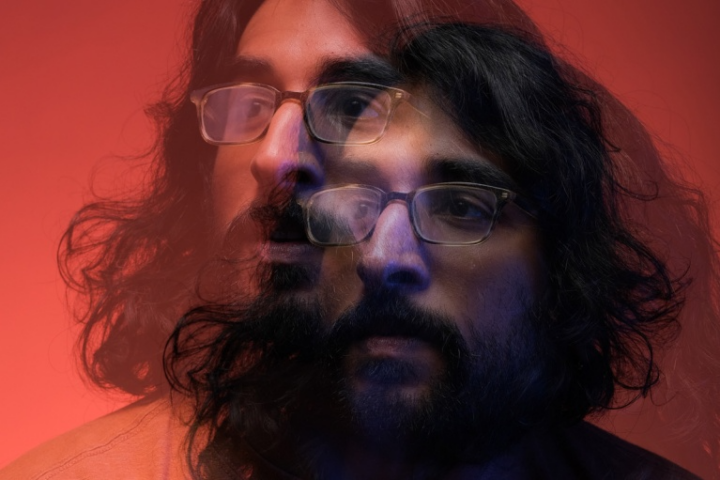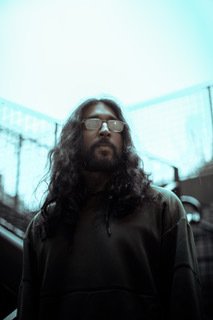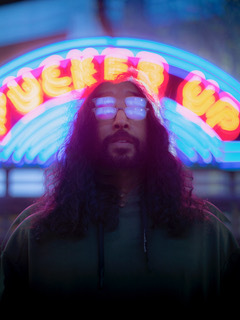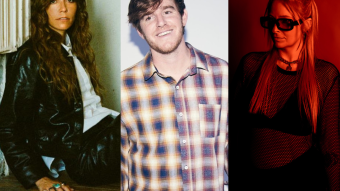
Understanding the Culture – Nikki Nair and the Techno Revival
Dance parties are a tried and true tradition among the youth of the Western world. Across the spectrum of dance music, there’s no shortage of sonic variety, each genre providing its own unique live experience. Some artists make electronic music for the masses — easy pop melodies and pleasant voices singing of heartbreak and overcoming that are heard in grocery stores, Planet Fitness gyms, and coffee shops on every corner. Other artists, though, stray away from these pop aesthetics and steer towards a dazzling lighthouse of weird sounds, deep frequencies, and chaotic anarchy.
Whether it’s experimental free-form bass music or deep techno, the far sides of this spectrum are far from pop music. Occasionally, creative minds like Nikki Nair — an Atlanta-based techno artist with a tendency for loud, late-night dance parties under dark neon lights — are able to tap into this culture with tenacious versatility and exciting innovation. Teenage rebellion, a chance encounter with techno legend Mike Banks and anarchic DIY parties in Tennessee are just a few of the circumstances that have driven him towards releases with Dirtybird and an innovative vision for his new record label, n goes to infinity.
Nair’s introduction to techno music is drenched in classic motifs. Growing up with strict Indian parents who envisioned their son as a successful doctor or lawyer, they did what they could to keep Nair on the straight in narrow during his adolescence in Knoxville, Tennessee. Despite their best efforts, his parents couldn’t stop him from creating music. In fact, in an effort to steer Nair away from music, they pushed him right into it.

“Music has always been a thing that I could not stop myself from doing,” Nair said smiling, “but my parents were really hell-bent on me becoming a doctor or something like that. I was just a rebellious kid. I did everything wrong. I wanted to go to the wildest parties and be around the craziest people possible.”
After discovering dance music during week-long stents grounded in his room with nothing to do except explore the deep caverns of the budding internet world, his desire to experience the rave culture he’d seen online eventually manifested into his own DIY techno parties, where he created an environment that represented the anarchic nature of dance culture until the rising sun kicked them out of the warehouse.
“I think it’s important to get people to listen to this music in the right context. So, we threw these parties that had crazy lighting and a nice sound system. We replaced all the lightbulbs in the building with red ones, so there was only red light and nothing else. We covered the ceilings and walls in camo netting, blacked out the windows, and fogged them out. It turned into this dark, hellish room. It was so immersive and when you walked into that, it was like ‘oh, okay. This is what it’s all about. I feel it now.’”
While certain American cities like Detroit, Denver, and Nair’s home base of Atlanta, have a multifaceted and respected EDM scene, other areas aren’t as receptive to this kind of music. In fact, it’s often considered taboo or frowned upon to listen to EDM in much of the South, where country music and hip-hop dominate the airwaves. During his time in Tennessee, Nair heard comments like “that’s not real music” every day.
“People were always like ‘that’s novelty music’ compared to the real bands who have guitars,” Nair says. “People thought that those bands were doing the real thing and we were doing something that wasn’t actual music or it’s like a fake version of it.”
Nair believes that this misunderstanding of EDM music and culture comes from a lack of exposure to the wide range of sounds across the many sub-genres under the umbrella term, EDM. Without being exposed to the full spectrum of creativity in the EDM world, many people assume all the genre has to offer is light pop bangers from the likes of Zedd and Marshmello or chaotic dubstep created by artists like Skrillex and Borgore.
Of course, there’s nothing wrong with this kind of music. There’s a reason behind the legendary status of songs like “The Middle” and “Wild for the Night.” But that music doesn’t fully represent the culture and people often feel out of place for making and enjoying music that doesn’t follow the traditional guidelines. Nair relates to this sentiment deeply, as it took him a long time to get comfortable showing his music to friends and family. Once he finally did put his music into the world, though, his fears quickly vanished.
“If you’re making music and you love what you’re doing but you feel like it’s not legitimate and you can’t show it to people, it’s almost like you’re wasting it,” Nair says. “The whole point is to show it to people. If your friends and family aren’t nice to you about it, it just doesn’t matter. They might not get it, and that’s fine. That’s their problem.”
This language that Nair speaks of isn’t a verbal one. Instead, it’s the language of creativity, spoken through musical expression and a shared connection on the dance floor that breaks down cultural boundaries and tethers each person together with an acute awareness of the present moment.
“You will find people who get it. There are people who want to hear it, but in order to find those people, you have to put it out into the world. Once you find them, it’s like nothing else, because those people speak your same language.”

This sense of belonging has always been at the forefront of techno culture. For a genre that’s almost completely void of lyrical content, techno music and dance parties have a deep political history that dates back to the first techno clubs in Chicago, which were originally designed to provide a safe space for the Black, POC, and LGBTQIA+ communities to express themselves without fear of violence or judgment. Like many people, Nair didn’t understand the political nature of the genre when he started making techno music. It took a chance meeting with Mike Banks, an industry icon from the second-wave Detroit techno group, Underground Resistance, to educate him about the genre’s political history.
“When I met Mike, he helped me understand what techno means in some way. It’s not just club music. It’s not just music made for raves. It means something. It has this very fundamental social function.”
Nair remains inspired by this harrowing origin story and has a deep appreciation for the queer community, which continues to push creative boundaries and keep dance parties alive.
That’s something Nair strives for in the techno industry: diversity. These days, the modern EDM industry has been sonically gentrified. Despite having firm roots in the black and LGBTQ+ communities, today’s biggest EDM artists, and their respective audiences, are white. That’s why Nair appreciates Atlanta’s underground dance scene and parties like Club Morph, which is owned, operated, and curated by the queer black community in Atlanta. This kind of diversity is what dance music is all about, and Nair appreciates the effort to encourage inclusivity in the beloved dance community.

“When you go to a commercial dance music event, like the ones I grew up going to, it’s basically all white dudes. No shade to white dudes, but it’s really nice when you go to parties and you see people like you and you’re not the only brown person standing there. Dance music has always been a safe haven for that sort of thing, you know?”
With this in mind, Nair recently launched his new record label, n goes 2 infinity, to celebrate not only diversity in cultures and ethnicity, but also diversity in sound. The label’s mission is to create tracks that share the experimental tendencies of deep bass music and the heartbeat of traditional techno, harmonizing with dance floor functionality and true appreciation for the culture.
“It’s hard to find music that has the momentum of a party where everyone can dance the whole time but also have this crazy sound design stuff that you get from bass music, which makes you feel like your head is being melted. I want to be able to incorporate both those aspects into [n goes 2 infinity].”
At one point or another, all musical artists dream of starting their own record label, a platform for them to fully express themselves without overbearing label executives telling them to color inside the lines. It’s true creative freedom, to create your own music, completely uninhibited, and release your art on your own platform. Maintaining a record label is no easy task, something Nair is quickly discovering. However, thanks to help from his manager, a genuine respect for the culture, and an ear for what keeps the party going, the future of Nikki Nair and n goes 2 infinity is brighter than ever.
On April 15, Nikki Nair and Nala Release their EP, The World is Always Endings, on Dirtybird Records. Presave the EP here.






